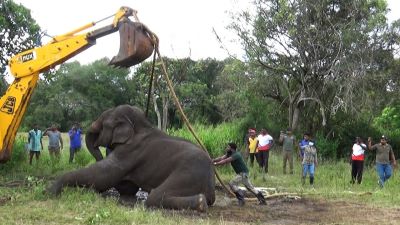Context-
The complex dynamics of human-wildlife interactions in India present a nuanced challenge where the distinction between wildlife capture and rescue is often blurred. In this context, it's essential to understand the implications of different approaches to conservation efforts, animal welfare, and community relations.
Challenges in Wildlife Rescue
Wildlife rescue invokes images of hope and valor in saving animals from perilous situations. However, in India, escalating human-wildlife encounters demand solutions beyond reactive capture and relocation, which often prove unsustainable and sometimes fatal to the animals involved.
- Definition and Nuanced Challenges: While 'rescue' implies saving animals from danger, distinguishing it from 'capture' poses nuanced challenges. The escalating human-wildlife interactions in India necessitate proactive solutions beyond reactive capture and relocation strategies.
- Balancing Rescue with Wildlife Management: The successful rescue of animals from conflict situations demands expertise and a strategic approach. Instances such as leopards trapped in wells or elephants stranded in human-made structures necessitate rescue efforts. However, not every wildlife encounter outside designated habitats requires intervention. For instance, leopards or elephants causing crop damage may not always justify capture under the guise of rescue.
- The Pitfalls of Ignoring Expert Advice : Government guidelines emphasize the use of preventative measures and discourage capturing wildlife based solely on sightings. Despite this, field practices often deviate from recommendations. Recent incidents highlight the consequences of mislabeling captures as rescues, resulting in fatal outcomes for the animals involved.
|
Case Studies: Lessons Learned In a notable case, an elephant 'rescued' from a coffee plantation was relocated far from its habitat, leading to subsequent fatal encounters. Similarly, a leopard 'rescued' from an agricultural area in Uttar Pradesh died shortly after capture, questioning the effectiveness of such interventions. |
- Data-driven Approaches to Rescue : Tracking and analyzing data on wildlife interventions can inform evidence-based rescue strategies. Understanding patterns of human-wildlife conflicts helps prioritize rescue efforts and evaluate their impact on conservation.
The Complexity of Snake Rescues
The handling of snake conflicts underscores the challenges in distinguishing between capture, removal, and genuine rescue.
- High Incidence of Snake Interactions : Snakes account for a significant portion of wildlife interactions due to their presence in diverse environments. However, mismanagement often leads to unnecessary removals and relocations.
- Survival Challenges of Relocated Snakes : Studies suggest relocated snakes face poor survival prospects, indicating that current rescue operations may inadvertently harm snake populations.
- Ethical Considerations in Rescue Operations: Rescue operations involving snakes often overlook ethical considerations, leading to stress, trauma, and reduced post-release survival rates.
- Innovative Approaches to Snake Rescues : Developing protocols for humane snake handling and release can enhance the effectiveness of rescue operations. Collaborations with local communities and snake experts can improve outcomes and reduce conflict incidents.
Towards Holistic Wildlife Management
The resolution of human-wildlife conflicts must prioritize proactive and ethical strategies that benefit both communities and wildlife.
- Proactive Mitigation Strategies : The Karnataka Forest Department's initiatives highlight the importance of early warning systems, community education, and habitat management to mitigate conflicts.
- Environmental Impact of Relocations : Relocating wildlife disrupts ecosystems and may not address underlying causes of conflicts. Ethical considerations and welfare concerns must guide management decisions.
- Community-Centric Solutions : Successful wildlife management requires community engagement, public education, and innovative strategies that foster coexistence and mutual benefit.
- Research and Policy Development : Investing in research to understand human-wildlife dynamics and developing evidence-based policies are crucial for effective wildlife management. Collaborations between researchers, conservationists, and policymakers can lead to sustainable solutions.
Conclusion
In navigating the complex terrain of wildlife 'capture' versus 'rescue' in India, it's imperative to prioritize ethical, sustainable, and community-driven approaches. The mislabeling of captures as rescues can have detrimental consequences for both wildlife and human communities. Moving forward, integrated strategies that promote coexistence and mitigate conflicts through prevention and education are key to fostering harmonious relationships between humans and wildlife while ensuring the long-term conservation of India's diverse ecosystems.
|
Probable Questions for UPSC Mains Exam- 1. What are the challenges associated with distinguishing between wildlife 'capture' and 'rescue' in the context of escalating human-wildlife interactions in India? (10 Marks, 150 Words) 2. How have government guidelines on wildlife management been disregarded in-field practices, leading to negative outcomes for captured animals? (15 Marks, 250 Words) |
Source- The Hindu







